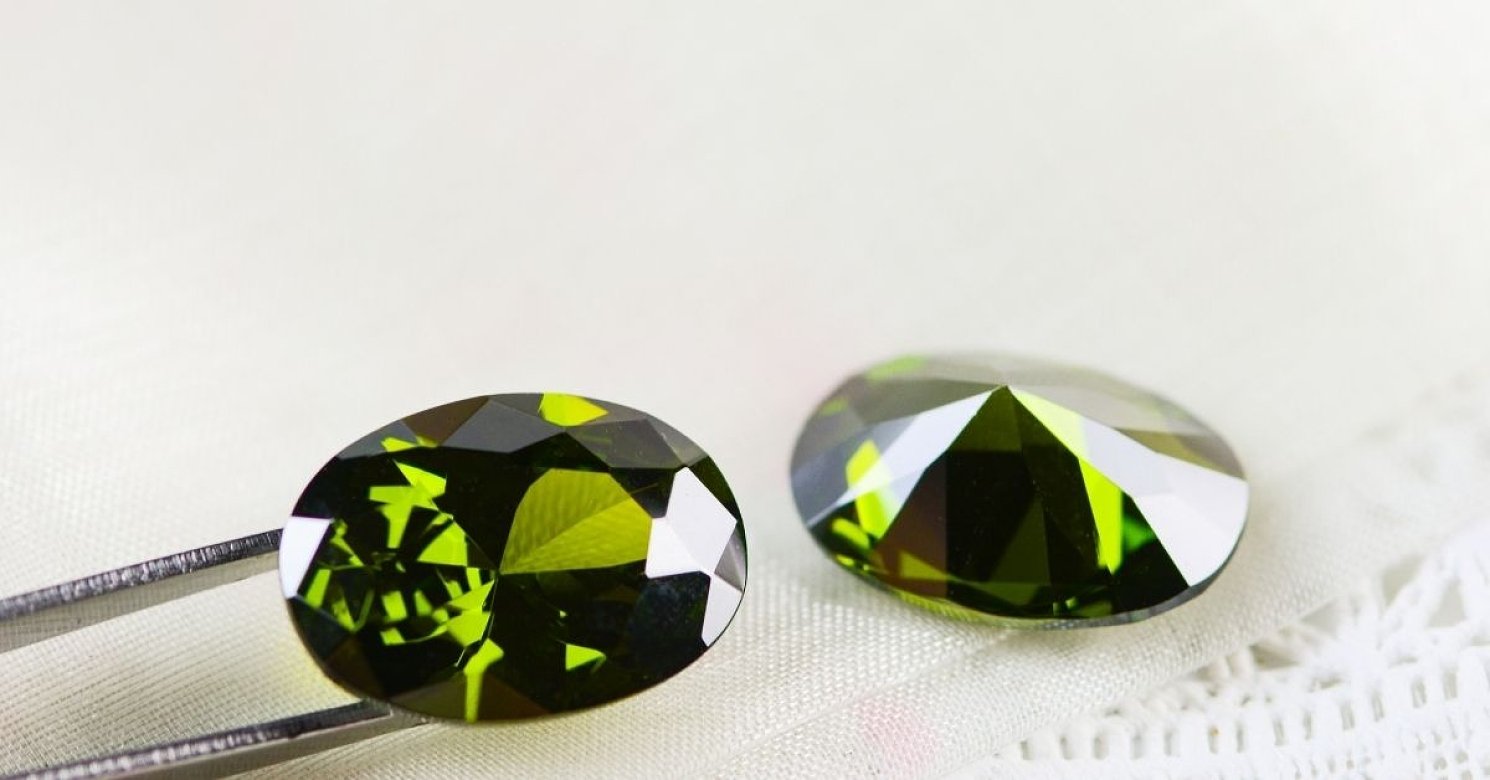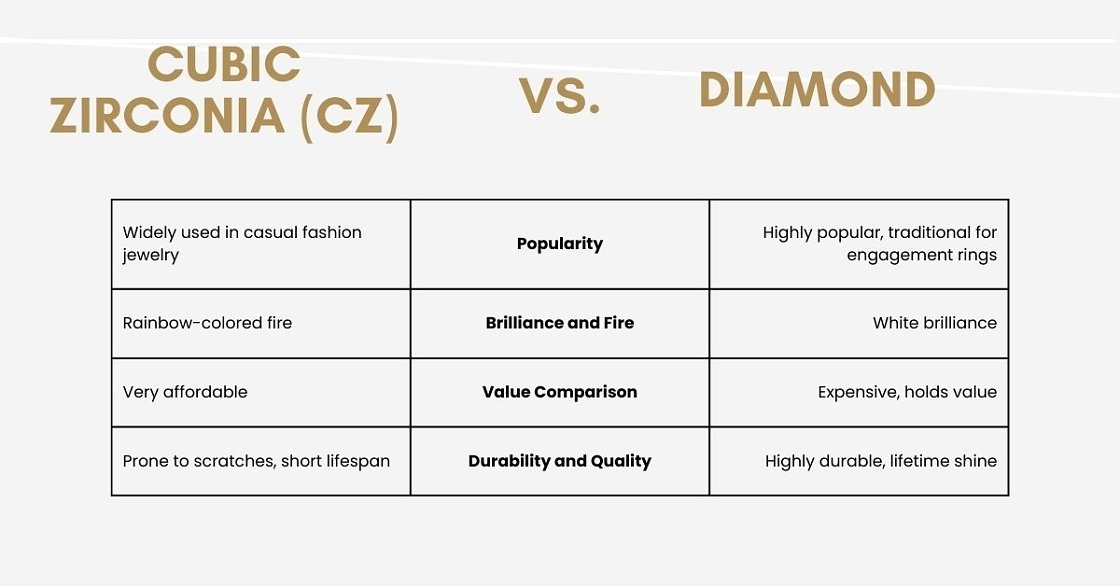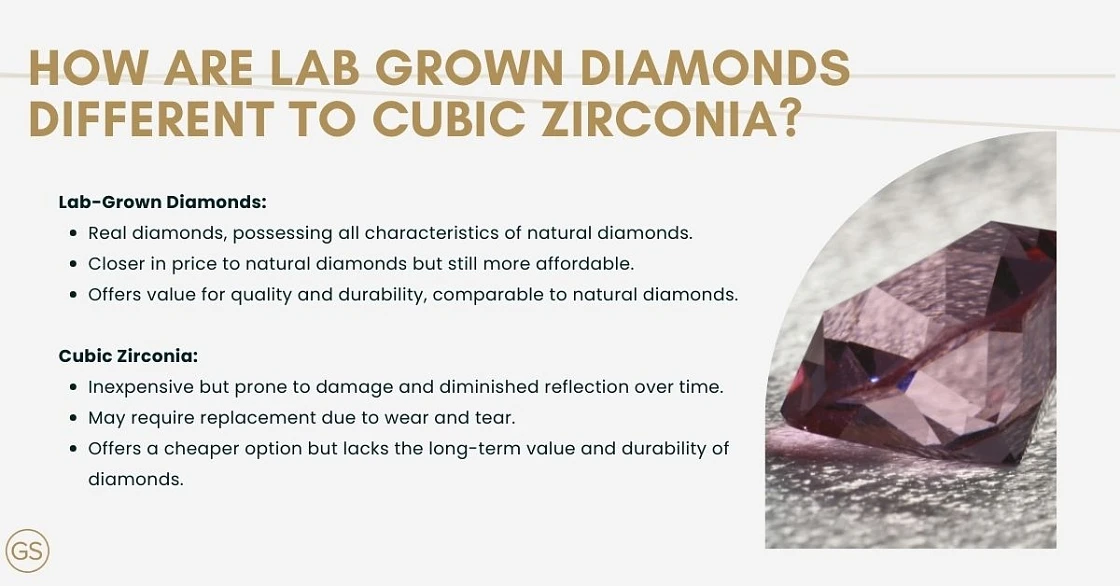
Looking at cubic zirconia as an alternative to a traditional diamond? It’s worthwhile understanding how the two stones compare in terms of value, appearance, and quality before making your decision.
As one of the more popular diamond alternatives, cubic zirconia is generally recognised as being a cheaper substitute to diamonds for diamond jewellery. However, like anything, in the jewellery industry, price is often representative of quality. As you can imagine, there is plenty to discuss when it comes to the differences between cubic zirconia, diamonds, costs, and value.
Cubic zirconia, also known as CZ, is a mineral that looks strikingly similar to that of a natural diamond, but is made of a different material entirely. While natural diamonds are made entirely from carbon element (C), cubic zirconia is composed of a composite substance known as zirconium dioxide (ZrO2).
Cubic zirconia can be found naturally, but the vast majority of CZ stones that are used in jewellery are man-made. Its name comes from the cubic crystalline form, not dissimilar to natural diamonds. However, the similarities shared between cubic zirconia and diamonds end there.
The essential differences between cubic zirconia vs. diamonds lie in four main areas that affect its suitability for use in jewellery, especially when it comes to engagement rings or wedding rings. Let’s delve into the areas of popularity, brilliance and fire, value comparison, and durability/quality.

As a synthetic mineral, cubic zirconia is easily produced in large quantities, with a relatively consistent quality between produced stones. As such, it’s an extremely accessible gemstone that is used widely in casual fashion jewellery and budget-friendly options for rings, earrings, bracelets, necklaces, and more. First marketed in 1976, cubic zirconia is one of the more popular diamonds imitations.
Despite being much rarer than cubic zirconia, diamonds are still considered to be even more popular than cubic zirconia. There’s no getting past the quality, design, and durability of natural diamonds - they hold a reputation as being the standard for high-quality jewellery, as well as the traditional stone for engagement rings.
Cubic zirconia is completely colourless, with an appearance comparable to a D colour rating of a diamond. Under light, however, cubic zirconia does not sparkle and shine in the same way as a diamond does.
Diamonds have more brilliance when reflecting light, which is the signature white light that it shines with. The reflections from cubic zirconia have more fire rather than brilliance, meaning that the reflected light is given off in a spectrum of rainbow colours.
This makes cubic zirconia easily differentiated from diamond — the variance in the way they shine is obvious even to those who aren’t trained jewellers.
Due to its synthetic nature and mass production, cubic zirconia is very affordable. A single carat cut, and polished cubic zirconia stone can be acquired for just $20. This is in stark contrast with diamonds, where prices canstart at $1,800 for a one-carat stone and increase with larger sizes and cuts.
Highly-valued diamonds tend to hold their value much better than cubic zirconia in the market. In fact, cubic zirconia has no practical resale value.
The biggest difference between cubic zirconia and diamond is durability.
Durability for gemstones is measured on the Mohs scale of mineral hardness (10 being the hardest). Cubic zirconia ranks at 8.5 on this scale, while diamond ranks at the maximum value of 10.
It may not seem like a big difference, but it’s why cubic zirconia is not typically used for high-quality jewellery. At 8.5, cubic zirconia is extremely prone to scratches from daily use, and most stones will only last about two years before they develop a cloudy and scored appearance. Diamonds can only ever be scratched by other diamonds, and are significantly more durable, carrying their shine across lifetimes.
While they are not ideal substitutes for diamonds, cubic zirconia is but one of the many other budget friendly alternatives to diamonds. When compared to other imitations of traditional diamonds, cubic zirconia are one that do not provide a worthy alternative of a truly beautiful diamond.
Lab-grown diamonds are now a rising choice for many diamond buyers who are looking for legitimate diamond imitations with a lower price tag. While made in a lab instead of in the earth, lab grown diamonds are still 100% real diamonds that share the same durability and properties as natural diamonds.
Moissanite stones are another alternative. While not diamonds, they share some similarities to diamonds and have a higher durability than cubic zirconia. In terms of brilliance and fire, however, they are more alike to cubic zirconia.

The simple answer is that lab-grown diamonds are real diamonds - they have all the characteristics of their natural counterparts, from signature white brilliance to incredible durability. Of course, this means that prices are closer to natural diamonds, but at a percentage of the market rate for similar carat size and quality.
What this all means for you as a buyer is that cubic zirconia, while incredibly cheap, also comes with the potential for needing replacement in the future as it sustains more damage and becomes less reflective. This is why many buyers still choose to buy a diamond, whether natural or lab-grown, as it offers more value for quality (and money).